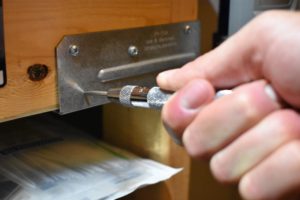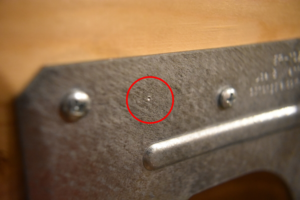Punched Out
Getting started is always the hardest. Use a punch to get your holes started to avoid drill bit slippage.
Last updated March 2019
Disclaimer
ProteShea, LLC is a participant in the Amazon Services LLC Associates Program, an affiliate advertising program designed to provide a means for sites to earn advertising fees by advertising and linking to Amazon.com
Some links may be affiliate links, in which ProteShea, LLC earns a commission if you use that affiliate link. Please note that this is at no additional cost to you and helps us in creating more content.
We like to find tools that makes our job easier. You have some task that is causing you problems and you look for a solution to get rid of those problems. If there is no solution available, create one. There are many companies that have started from this realization. SpaceX realized that rockets were too expensive and expendable, and they have completely revolutionized the space industry. LinkedIn realized that there was not a professional social media platform designed to get people hired. Google realized that search engines were not robust and as efficient as they could be.

Our case is a little less extreme since we didn’t have to develop a tool to fix our problem. We were lucky enough to find a pretty darn good solution for it. The problem? Drilling holes into a metal surface with a drill bit. The drill bit tends to slip whenever you start drilling since there is not a lot of friction to keep it from sliding. Even as you apply more downward force to the drill, you might end up shearing the drill bit if it is less than 3/16” in diameter. The solution? Use what’s called a center punch. The center punch forms a small dimple which you can place your drill bit into. We like to use a spring-loaded center punch, but you could also use a pin punch and hit it with a hammer.
With aluminum, you usually just have to strike it once to form a dimple since it’s a relatively soft metal. For harder metals like steel, you may have to strike it a few times. Once you get your dimple, you can start drilling with ease. An example of a dimple created by a center punch in a piece of aluminium is shown.

In life, getting started is one of the hardest things to do. Why? Our brain is wired to avoid fear and to take the path of least resistance. When you start something new, you’re not sure what the outcome will be. You start asking the wrong questions and begin to doubt yourself. You don’t want to fail. Maybe you can’t afford to fail or you think you’ll be embarrassed or somebody might judge you. Quite the opposite. You should welcome failure. When you try and fail, you gain experience. That experience can be turned into leverage. That leverage can help you succeed. See, it is your failures that help you succeed. So, get out there and get started!
What did we learn?
- Invite failure to help you succeed.
- Find solutions to help make your job easier. If there is no solution, create one.